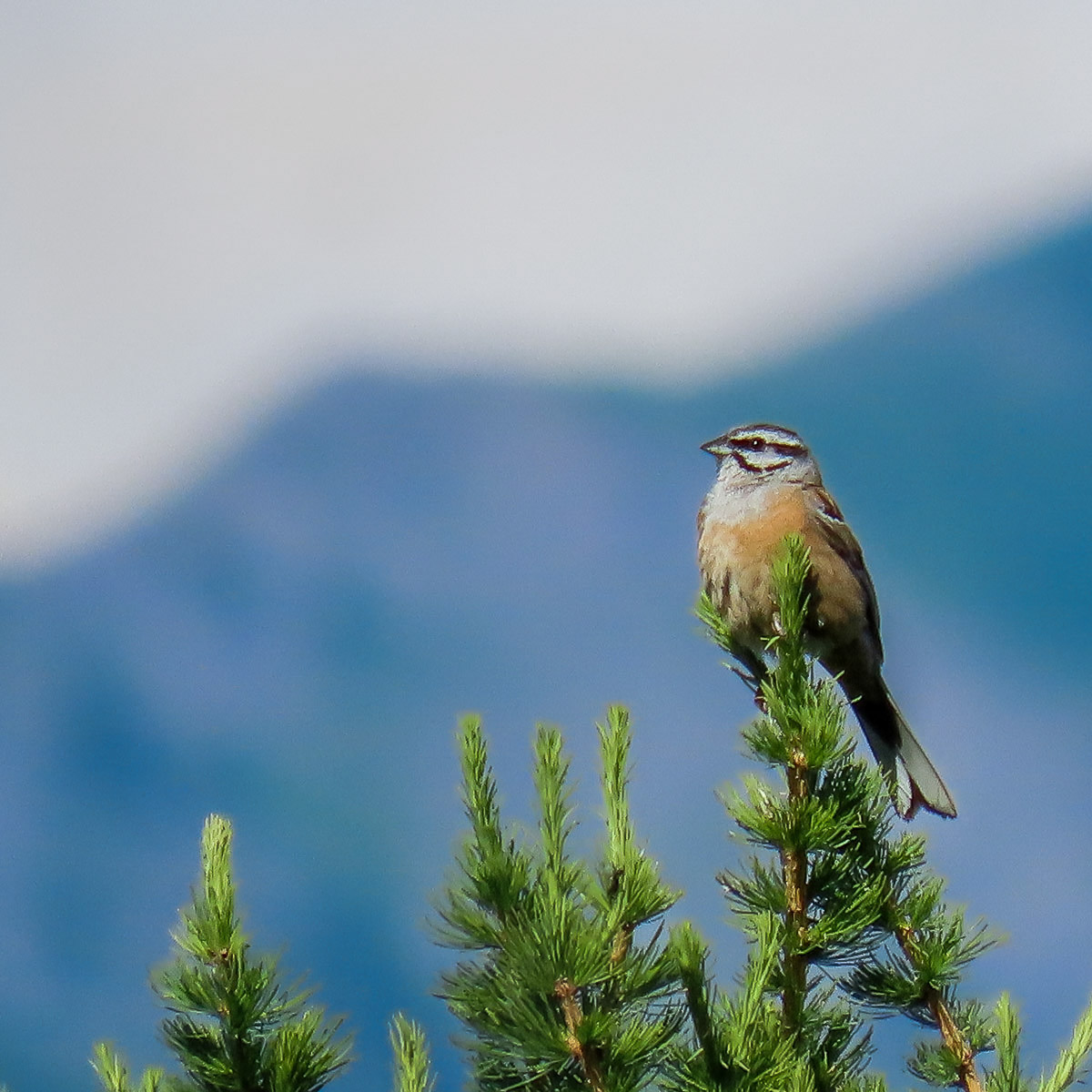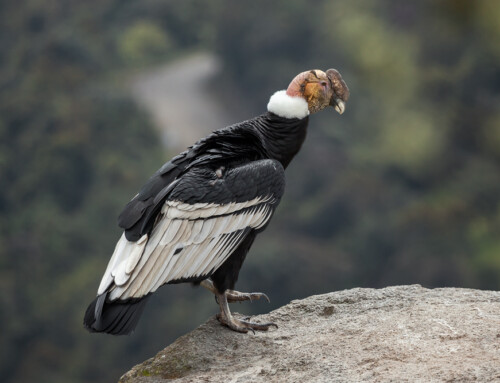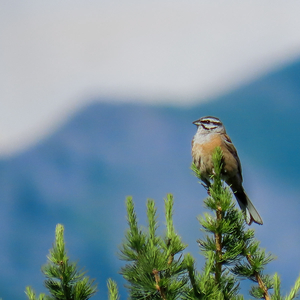 LINKED PAPER
LINKED PAPER
Avalanche tracks are key habitats for the Rock Bunting Emberiza cia in the Alps. Requena, E., Alba, R., Rosselli, D., & Chamberlain, D. 2022 Ardeola. doi: 10.13157/arla.69.2.2022.ra2 VIEW
In the mountains, open and semi-open habitats found above the closed forest limits host relatively high bird diversity. Those habitats, especially the transition zone between forests and alpine grasslands, are highly heterogeneous and are composed of mosaics of shrubs, rocks, trees and grassland patches (Nagy & Grabherr 2009). In Europe, the decrease in agro-pastoral activities and climate change led to an upshift in forest elevational limits (Gehrig-Fasel et al. 2007). Encroachment of closed forests at higher elevations is a threat to open-land birds in the mountains (Chamberlain et al. 2013) and we have already observed a 10% decline in mountain bird specialists between 2002 and 2014 (Lehikoinen et al. 2019).
Natural disturbance to forests caused by snow avalanche activities have been shown to create and maintain open and heterogeneous habitats within mountain forests (Figure 1) (Bebi et al. 2009). We decided to assess if these habitats created by avalanches could be suitable for semi-open-land mountain birds which currently remains unknown.
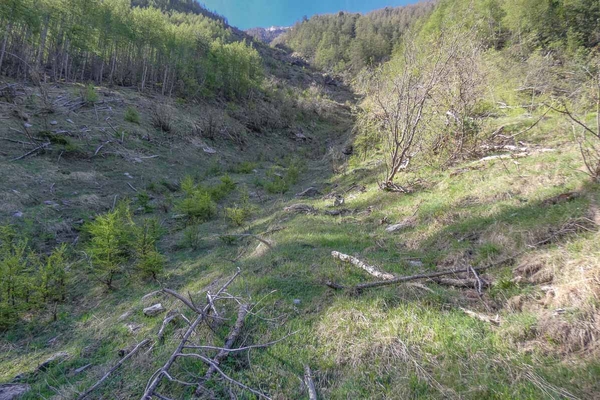
Figure 1 Typical avalanche track found in our study area © Riccardo Alba.
To do so, we studied the Rock Bunting (Emberiza cia), a bird species typical of treeline-ecotones and semi-open habitats in mountainous regions. This species has yet to be studied at these elevations, therefore, we also wanted to highlight the key habitat characteristics that influence its presence. We surveyed Rock Bunting presence in the Western Italian Alps along transects in both avalanche tracks and undisturbed habitats within three different elevation belts:
- Forest: 1,400-2,200m
- Treeline ecotone: 2,000-2,300m
- Alpine grassland: 2,100-2,500m
It appeared that the avalanches do not induce major disturbances in treeline ecotones or alpine grasslands. Accordingly, Rock Buntings occurred in similar proportions in disturbed and undisturbed treeline ecotones and alpine grasslands (Figure 2). However, in the forest, the tracks disturbed by avalanches were greatly impacted as they presented fewer tall trees but higher rock, grass and shrubs cover and more small trees than the adjacent habitats. While the species was very unlikely to occur in undisturbed forest habitats, its presence in the forest avalanche tracks was undifferentiated from the one in higher elevation belts (Figure 2). This shows that avalanches create habitat mosaics in the mountain forest belt that are analogous to the ecotone habitat at the treeline.
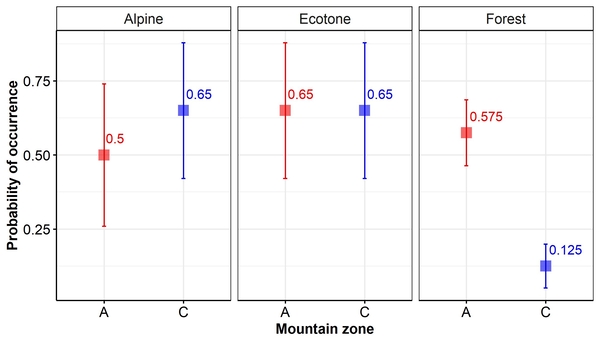
Figure 2 Probability of occurrence of the Rock Bunting in avalanche tracks (A; red) or control points situated 200m away from the tracks (C; blue) within three mountain habitat belts. The bars represent the standard errors and the exact value is displayed above the points.
The presence of the Rock Bunting was mostly driven by intermediate rock cover with good access to grass patches. The species occurrence was also promoted by the presence of gullies. Sánchez et al. (2009) found similar associations with ditches which suggests that the species is associated with features increasing terrain complexity. The use of complex terrain by the species may result in a reduction in exposure of adult birds and nests to predators compared to flatter areas (Götmark et al. 1995). Interestingly, higher shrub cover within gullies tended to increase the probability of presence of Rock Buntings (Figure 3) while previous studies of the species at lower elevations highlighted an avoidance of shrubs (Sánchez et al., 2009). This is likely due to the harsher climate in our study area at higher elevations.

Figure 3 Relationship between the probability of occurrence of the Rock Bunting and the percentage of shrub cover in an area with gulley (red line) and without gulley (blue line). Dot sizes indicate the number of observations. The data are fitted with the averaged logistic regression model presented with the line and the shaded area is the standard error.
To conclude, avalanches create suitable habitats for the Rock Bunting in mountainous forests. More broadly, we would expect that avalanche tracks benefit other bird species. In the context of treeline upshift, avalanche tracks could provide refuge habitats for semi-open-land birds if the avalanche frequency and severity are not altered by climate change. They could however either increase due to wetter snow which is more likely to cause avalanches or decrease due to less precipitation and a decrease in snow cover (Pepin et al. 2022; Rumpf et al. 2022). Given their potential importance as refuge habitats and relatively high diversity habitats, further research should be conducted to predict the impact of climate change on snow avalanches to understand the possible consequences on the Rock Bunting, and mountain biodiversity more generally.
References
Bebi, P., Kulakowski, D., & Rixen, C. 2009. Snow avalanche disturbances in forest ecosystems-State of research and implications for management. Forest Ecology and Management 257: 1883-1892. VIEW
Chamberlain, D.E., Negro, M., Caprio, E., & Rolando, A. 2013. Assessing the sensitivity of alpine birds to potential future changes in habitat and climate to inform management strategies. Biological Conservation 167: 127-135. VIEW
Gehrig-Fasel, J., Guisan, A., & Zimmermann, N.E. 2007. Tree line shifts in the Swiss Alps: climate change or land abandonment? Journal of Vegetation Science 18: 571 VIEW
Götmark, F., Blomqvist, D., Johansson, O. C., & Bergkvist, J. 1995. Nest site selection: a trade-off between concealment and view of the surroundings? Journal of Avian Biology 26: 305-312. VIEW
Lehikoinen, A., et al. 2019. Declining population trends of European mountain birds. Global Change Biology 25: 577-588. VIEW
Nagy, L., & Grabherr, G. 2009. The biology of alpine habitats. Oxford University Press on Demand.
Pepin, N. C., Arnone, E., Gobiet, A., Haslinger, K., Kotlarski, S., Notarnicola, C., Palazzi, E., Seibert, P., Serafin, S., Schöner, W., Terzago, S., Thornton, J. M., Vuille, M., & Adler, C. 2022. Climate changes and their elevational patterns in the mountains of the world. Reviews of Geophysics 60: e2020RG000730. VIEW
Rumpf, S. B., Gravey, M., Brönnimann, O., Luoto, M., Cianfrani, C., Mariethoz, G., & Guisan, A. 2022. From white to green: Snow cover loss and increased vegetation productivity in the European Alps. Science 376: 1119-1122. VIEW
Sánchez, S., Václav, R., & Prokop, P. 2009. An inter-regional approach to intraspecific variation in habitat association: Rock Buntings Emberiza cia as a case study. Ibis 151: 88-98. VIEW
Image credit
Top right: Rock Bunting Emberiza cia © Emmanuel Requena.
If you want to write about your research in #theBOUblog, then please see here.


